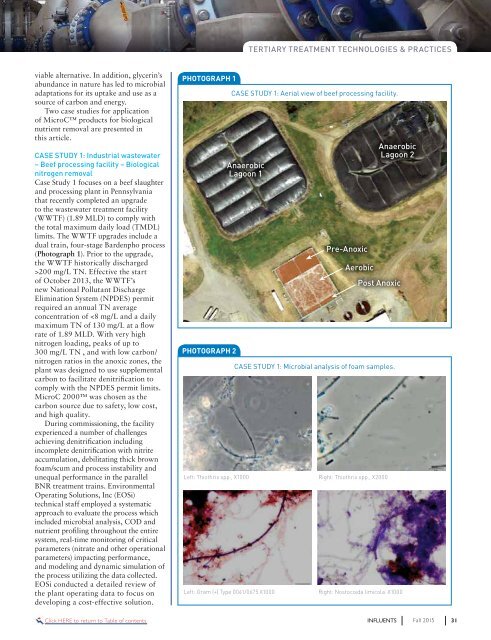lauren@kelman.ca
1YLWYxL
1YLWYxL
You also want an ePaper? Increase the reach of your titles
YUMPU automatically turns print PDFs into web optimized ePapers that Google loves.
TERTIARY TREATMENT TECHNOLOGIES & PRACTICES<br />
viable alternative. In addition, glycerin’s<br />
abundance in nature has led to microbial<br />
adaptations for its uptake and use as a<br />
source of <strong>ca</strong>rbon and energy.<br />
Two <strong>ca</strong>se studies for appli<strong>ca</strong>tion<br />
of MicroC products for biologi<strong>ca</strong>l<br />
nutrient removal are presented in<br />
this article.<br />
CASE STUDY 1: Industrial wastewater<br />
– Beef processing facility – Biologi<strong>ca</strong>l<br />
nitrogen removal<br />
Case Study 1 focuses on a beef slaughter<br />
and processing plant in Pennsylvania<br />
that recently completed an upgrade<br />
to the wastewater treatment facility<br />
(WWTF) (1.89 MLD) to comply with<br />
the total maximum daily load (TMDL)<br />
limits. The WWTF upgrades include a<br />
dual train, four-stage Bardenpho process<br />
(Photograph 1). Prior to the upgrade,<br />
the WWTF histori<strong>ca</strong>lly discharged<br />
>200 mg/L TN. Effective the start<br />
of October 2013, the WWTF’s<br />
new National Pollutant Discharge<br />
Elimination System (NPDES) permit<br />
required an annual TN average<br />
concentration of


